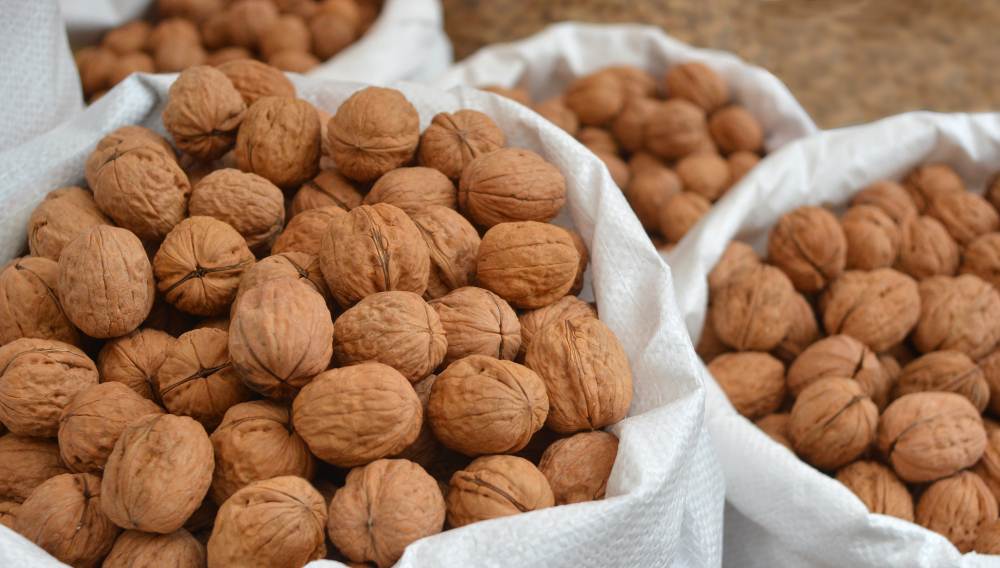Walnuts are more than just a crunchy snack; they are a global commodity with significant economic and nutritional value. As one of the most traded tree nuts, walnuts are cultivated across various regions, each contributing uniquely to the global market. This article delves into the dynamics of walnut production and export, highlighting the leading exporters and the factors influencing their dominance.
Understanding Walnut Production and Export

Before identifying the largest walnut exporter, it’s essential to differentiate between walnut production and export. Production refers to the cultivation and harvesting of walnuts, while export pertains to the shipment of these nuts to international markets. A country may be a top producer without being a leading exporter, depending on domestic consumption and processing capabilities.
Leading Walnut Exporters

1. United States
The United States, particularly California, is a dominant force in the walnut export market. California’s favorable climate and advanced agricultural practices have made it the primary source of U.S. walnut production. In 2023, the U.S. exported approximately $1.45 billion worth of walnuts, accounting for a significant share of global exports. The state’s infrastructure supports efficient processing and distribution, ensuring high-quality products reach international markets.
2. China
China is both a major producer and exporter of walnuts. While a substantial portion of its production caters to domestic consumption, China has increasingly focused on expanding its export markets. In 2023, China’s walnut exports were valued at around $276 million. The country’s vast production capacity and improving quality standards have bolstered its position in the global market.
3. Chile
Chile has emerged as a significant player in walnut exports, capitalizing on its off-season production relative to Northern Hemisphere countries. This timing allows Chilean walnuts to fill market gaps, making them a preferred choice for many importers. In 2023, Chile’s walnut exports were valued at approximately $247 million. The country’s commitment to quality and sustainable practices has enhanced its reputation among international buyers.
4. Mexico
Mexico’s walnut industry has experienced substantial growth, driven by both domestic production and processing capabilities. In 2023, Mexico exported walnuts worth around $575 million, making it one of the top exporters globally. The country’s strategic location and trade agreements with various nations have facilitated its entry into diverse markets.
5. Germany
Germany, while not a major producer, plays a crucial role in the walnut export market due to its strong processing industry and strategic position within the European Union. In 2023, Germany’s walnut exports were valued at approximately $120.6 million. The country’s emphasis on quality and innovation in processing has made it a key exporter in the European market.
Factors Influencing Walnut Export Dominance

Several factors contribute to the success of these leading walnut exporters:
1. Climate and Geography
Optimal growing conditions are crucial for walnut cultivation. Regions with Mediterranean climates, characterized by mild, wet winters and hot, dry summers, are ideal for walnut trees. Countries like the United States (California), China, and Chile benefit from such climates, which contribute to high-quality production.
2. Agricultural Practices
Advanced farming techniques, including irrigation systems, pest management, and soil health maintenance, enhance walnut yield and quality. The adoption of modern agricultural practices in countries like the United States and Chile has significantly improved their competitiveness in the global market.
3. Processing Capabilities
Efficient processing facilities enable exporters to add value to raw walnuts, producing products like shelled nuts, walnut oil, and walnut-based snacks. Countries with robust processing industries, such as Germany and Mexico, can offer a diverse range of walnut products to international markets.
4. Trade Agreements and Logistics
Strategic trade agreements and efficient logistics networks facilitate the smooth export of walnuts. The United States, Mexico, and Chile benefit from trade agreements that reduce tariffs and streamline customs procedures, enhancing their export competitiveness.
5. Market Demand and Consumer Preferences
Understanding and catering to consumer preferences is vital. For instance, the demand for organic and sustainably produced walnuts has influenced exporters to adopt eco-friendly practices. Countries that align their production with market trends can capture a larger share of the global walnut market.
Challenges Faced by Walnut Exporters

Despite their dominance, leading walnut exporters encounter several challenges:
1. Climate Change
Alterations in weather patterns, such as unpredictable rainfall and temperature fluctuations, can adversely affect walnut yields. Exporters must invest in climate-resilient farming practices to mitigate these impacts.
2. Trade Barriers
Tariffs, quotas, and non-tariff barriers can hinder walnut exports. Navigating these trade barriers requires diplomatic efforts and compliance with international trade regulations.
3. Pest and Disease Management
Pests and diseases can compromise walnut quality and yield. Continuous research and development in pest control and disease management are essential to maintain production standards.
4. Market Competition
The global walnut market is competitive, with emerging producers vying for market share. Established exporters must innovate and maintain high-quality standards to retain their positions.
Future Outlook

The global walnut market is poised for growth, driven by increasing health consciousness and the expanding popularity of plant-based diets. Leading exporters are investing in sustainable practices, research and development, and market diversification to capitalize on these trends. Countries that adapt to changing consumer preferences and environmental challenges will continue to thrive in the global walnut export market.
Conclusion
While several countries contribute significantly to the global walnut export market, the United States stands out as the largest exporter, thanks to its optimal growing conditions, advanced agricultural practices, and robust processing capabilities. However, other nations like China, Chile, Mexico, and Germany also play pivotal roles, each bringing unique strengths to the global walnut trade. Understanding the dynamics of walnut production and export is crucial for stakeholders aiming to navigate and succeed in this competitive market.






Leave A Comment